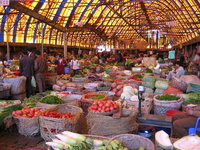Difference between revisions of "Post-scarcity"
From AdCiv
| Line 4: | Line 4: | ||
When civilization reaches this point, everything from basics like clean water, nutritious food, medicine and suitable housing to less essential material goods like vehicles, computers, mobile phones and all the way up to purely luxury items, will be freely available to anyone. | When civilization reaches this point, everything from basics like clean water, nutritious food, medicine and suitable housing to less essential material goods like vehicles, computers, mobile phones and all the way up to purely luxury items, will be freely available to anyone. | ||
| − | The simplest analogy is that of a jungle producing fruit for anyone to eat. But in this instance the jungle is highly autonomous distributed machinery designed to | + | The simplest analogy is that of a jungle producing fruit for anyone to eat. But in this instance the jungle is highly autonomous distributed machinery designed to make what we require. |
== Abundance of the fundamental resources == | == Abundance of the fundamental resources == | ||
Revision as of 05:11, 22 December 2005
The post-scarcity age is an anticipated period where due to advancing technology and efficient use of natural resources there will be a great abundance of the material items that people require, achieved with a minimal impact to the environment.
When civilization reaches this point, everything from basics like clean water, nutritious food, medicine and suitable housing to less essential material goods like vehicles, computers, mobile phones and all the way up to purely luxury items, will be freely available to anyone.
The simplest analogy is that of a jungle producing fruit for anyone to eat. But in this instance the jungle is highly autonomous distributed machinery designed to make what we require.
Abundance of the fundamental resources
- But do we really have the resources for this kind of society?
- Civilization boils down to three fundementals: material, energy and intelligence – none of which are in short supply. It is the current inefficient methods of use (and re-use) and perceived economic restrictions that make it appear that there are critical limitations of these resources.
- See the fundamental resources page for more information on resource availability.
- How do we design machinery advanced enough to give us this?
- See

